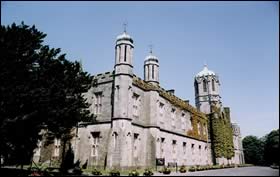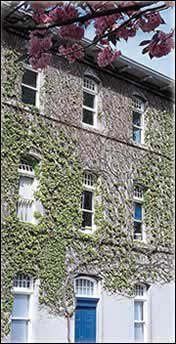
 |
|
|
 |
The Department of Civil Engineering was one of the original departments when the University opened its doors to students in 1849 and it has offered a BE degree continuously since then. At the time of its inception, it was one of only six Schools of Engineering in Great Britain and Ireland. In the 19th century, Civil Engineering was the dominant branch of engineering and this was reflected by the curriculum at NUI, Galway also. While an Electrical Engineering stream was offered from 1909 to 1932, it was not until 1970 that 
|
|
|||
| The
National University of Ireland, Galway
- (Ollscoil na hÉireann, Gaillimh) was founded in 1845 as one of
the three original colleges of the Queen's University. The College opened
for students in October 1849. As a result the Irish Universities Act (1908),
Queen's College Galway became a Constituent College of the new National
University of Ireland and under a new charter the name was changed to University
College Galway. |
||||||
In 1929, the College was given a special statutory responsibility in respect of the use of the Irish language as a working language. Under the Universities Act, 1997, the status changed to that of a Constituent University and it is now National University of Ireland, Galway / Ollscoil na hÉireann, Gaillimh. Since the 1960s the University has experienced significant and continuous growth, both in its stock of buildings, facilities and physical resources and also in the numbers of its students and staff. Its student body during the 1999/2000 academic year is over 10,000, with academically strong programmes of teaching and research across its seven Faculties. |